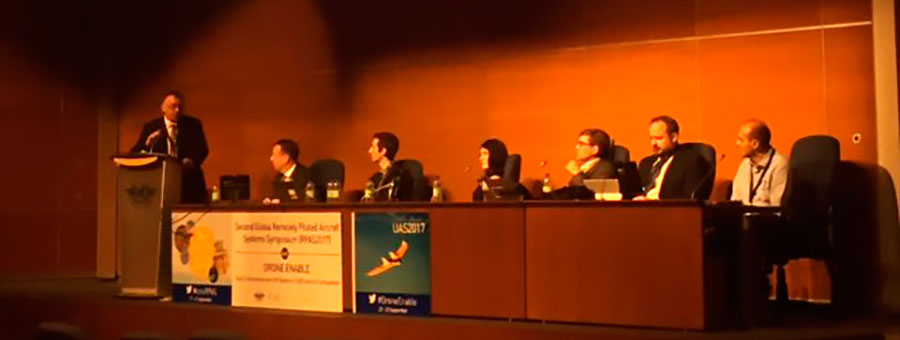Last weekend took place Drone Enable, an ICAO’s symposium organized in Montreal, Canada. The goal of this symposium was to continue the development of a global operations framework for an Unmanned Traffic Management (UTM) system. This process has been operative since the beginning of this year, starting with AUVSI Xponential, in Dallas, and it will continue with the next symposium in December in Canada. Down below there are some of the main Drone Enable conclusions, focused on three areas: registering, identification and monitoring; communications and geofencing.
Due to ICAO intention to develop a common global frame for UTM systems, they are on the need of determining flexible regulatory approaches and adaptable to any drone to be included in the system, as it was underlined in Drone Enable conclusions at the end of the event. It was also remarked how important is the register and identification of drones which are part of a UTM system, just as it happens with other vehicles either aerial or terrestrial. Companies such as Amazon and Boeing are insisting on intertwined communications between aircraft and air-ground, using facilities and technologies similar to the ones used by cellphones, which have been successfully working more than 20 years.
With these Drone Enable conclusions together with others, the next symposium about the global frame of operations for UTM systems proposed by ICAO will be held in December. The said frame will not be legally binding but it will work as an orientation for countries willing to stablish a UTM system.
Embention contributions to Drone Enable conclusions
The creation of the first symposium about UTM systems took place due to the request for information (RFI) performed by ICAO regarding to systems already in the market which are compatible with UTM systems. This RFI was answered by more than 75 companies and Embention was one of them.
Embention was selected for its solutions and ideas, which fitted perfectly in the symposium and enrichened Drone Enable conclusions. Embention underlined that with the help of its Veronte Autopilot it would be possible to fulfill the needs regarding to registering, identification and monitoring, communications and geofencing. This fact is justified since Veronte Autopilot has been developed to be a key element in any UTM system. Every Veronte Autopilot is registered in the Veronte Cloud system during its manufacturing process, permitting its identification and tracking. It also embeds 4G communication modules, GPS sensors and transponders, which help decisively in UTM matters regarding to geofencing and communications.
For more information about UTM systems, you can let us know your inquiries and questions through our contact form.
